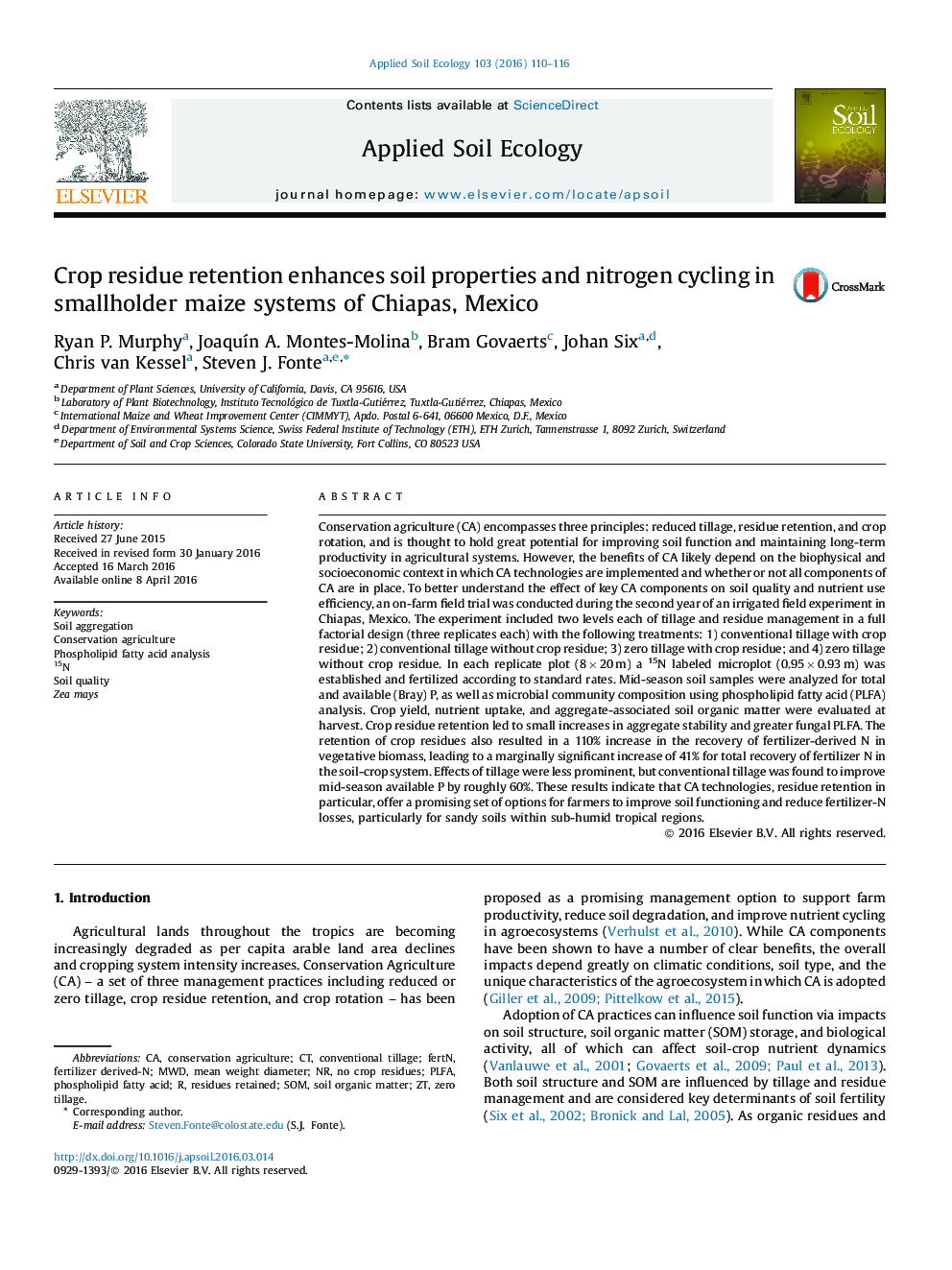| کد مقاله | کد نشریه | سال انتشار | مقاله انگلیسی | نسخه تمام متن |
|---|---|---|---|---|
| 4381788 | 1617780 | 2016 | 7 صفحه PDF | دانلود رایگان |
• Maize residue retention enhanced soil aggregation and fungal PLFA biomarkers.
• Crop residue retention increased fertilizer N recovery by 41% in the soil-crop system.
• Tillage improved mid-season P availability in the surface layer by 60%.
Conservation agriculture (CA) encompasses three principles: reduced tillage, residue retention, and crop rotation, and is thought to hold great potential for improving soil function and maintaining long-term productivity in agricultural systems. However, the benefits of CA likely depend on the biophysical and socioeconomic context in which CA technologies are implemented and whether or not all components of CA are in place. To better understand the effect of key CA components on soil quality and nutrient use efficiency, an on-farm field trial was conducted during the second year of an irrigated field experiment in Chiapas, Mexico. The experiment included two levels each of tillage and residue management in a full factorial design (three replicates each) with the following treatments: 1) conventional tillage with crop residue; 2) conventional tillage without crop residue; 3) zero tillage with crop residue; and 4) zero tillage without crop residue. In each replicate plot (8 × 20 m) a 15N labeled microplot (0.95 × 0.93 m) was established and fertilized according to standard rates. Mid-season soil samples were analyzed for total and available (Bray) P, as well as microbial community composition using phospholipid fatty acid (PLFA) analysis. Crop yield, nutrient uptake, and aggregate-associated soil organic matter were evaluated at harvest. Crop residue retention led to small increases in aggregate stability and greater fungal PLFA. The retention of crop residues also resulted in a 110% increase in the recovery of fertilizer-derived N in vegetative biomass, leading to a marginally significant increase of 41% for total recovery of fertilizer N in the soil-crop system. Effects of tillage were less prominent, but conventional tillage was found to improve mid-season available P by roughly 60%. These results indicate that CA technologies, residue retention in particular, offer a promising set of options for farmers to improve soil functioning and reduce fertilizer-N losses, particularly for sandy soils within sub-humid tropical regions.
Journal: Applied Soil Ecology - Volume 103, July 2016, Pages 110–116
